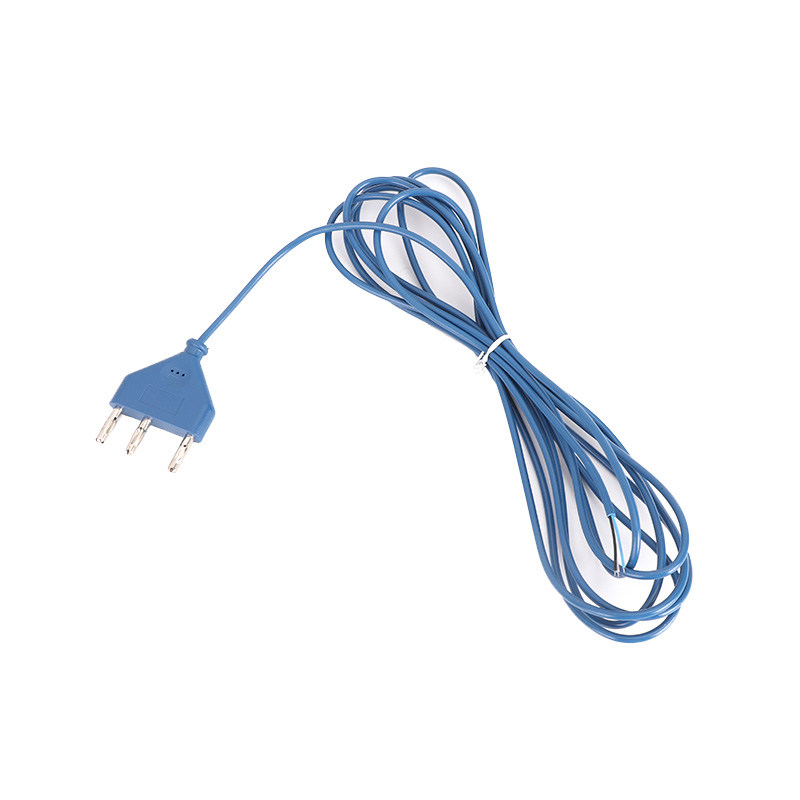Submit feedback
During use, how can we ensure that the power cord for electrosurgical pencil will not cause safety hazards due to high temperature?
 2025.03.14
2025.03.14
 Industry News
Industry News
When using the power cord of an electrosurgical pencil, it is critical to ensure that it does not pose a safety hazard due to high temperatures. Here are some specific measures and suggestions to help reduce risks and ensure safety:
1. Choose high-quality, compliant products
Certification standards: Make sure the power cord meets international medical device safety standards (such as ISO 13485, IEC 60601, CE or FDA certification). These certifications indicate that the product has been rigorously tested and can withstand the high temperatures and current loads in the surgical environment.
High temperature resistant materials: Choose power cords made of high temperature resistant materials (such as silicone or Teflon), which have good thermal stability and insulation properties.
2. Proper operation of equipment
Avoid overload: Make sure the electrosurgical device connected to the power cord operates within its rated power range to avoid overheating of the power cord due to excessive current.
Inspect the equipment regularly: Check the power cord and interface for wear, cracks or other damage before each use. If there is any abnormality, the power cord should be replaced immediately.
Proper wiring: During surgery, avoid excessive bending or twisting of the power cord to prevent heat from being concentrated in one part.
3. Controlling ambient temperature
Operating room temperature: Ensure that the temperature in the operating room is appropriate to avoid excessive temperature causing additional heat load on the power cord.
Keep away from heat sources: During surgery, ensure that the power cord is away from other heat-generating devices (such as lights, heaters, etc.) to reduce the impact of external heat sources on it.
4. Design and function optimization
Heat dissipation design: Some high-end power cords may be equipped with heat dissipation design (such as built-in thermal conductive materials or special structures) to disperse the heat generated by the current.
Short circuit protection: Choose a power cord with short-circuit protection function, which can automatically cut off the connection when the current is abnormal to prevent overheating and cause fire or equipment damage.
5. Regular maintenance and cleaning
Cleaning and disinfection: Clean and disinfect according to the manufacturer's instructions, but avoid using overly irritating chemicals to avoid damaging the outer insulation material of the power cord.
Regular replacement: Even if the power cord is not obviously damaged, it should be replaced regularly according to the frequency of use and the schedule recommended by the manufacturer to ensure that it is always in optimal condition.
6. Monitoring and early warning
Real-time monitoring: If the device supports it, you can use a power cord with temperature monitoring function or an external monitoring device to detect the temperature change of the power cord in real time.
Train medical staff: Ensure that all medical staff using electrosurgical equipment understand how to identify signs of overheating of the power cord (such as odor, discoloration or abnormal touch) and take emergency measures when problems are found.
7. Emergency response measures
Backup power cord: Prepare backup power cords in the operating room so that they can be quickly replaced when abnormalities are found.
Power failure protection: Once the power cord is found to be overheated or has a burning smell, immediately turn off the power of the device and notify the technician to check.
8. Follow the manufacturer's guidelines
Each power cord has its own specific usage restrictions and precautions. Be sure to read and follow the user manual and safety guidelines provided by the manufacturer carefully.
If you have any questions or uncertainties, contact the manufacturer's technical support team in a timely manner.
Through the above measures, the risk of safety hazards caused by high temperature of the electrosurgical pen power cord can be effectively reduced, while ensuring the safety and stability of the surgical process.
 TOP
TOP
 ENG
ENG
 English
English русский
русский 한국어
한국어 Deutsch
Deutsch









